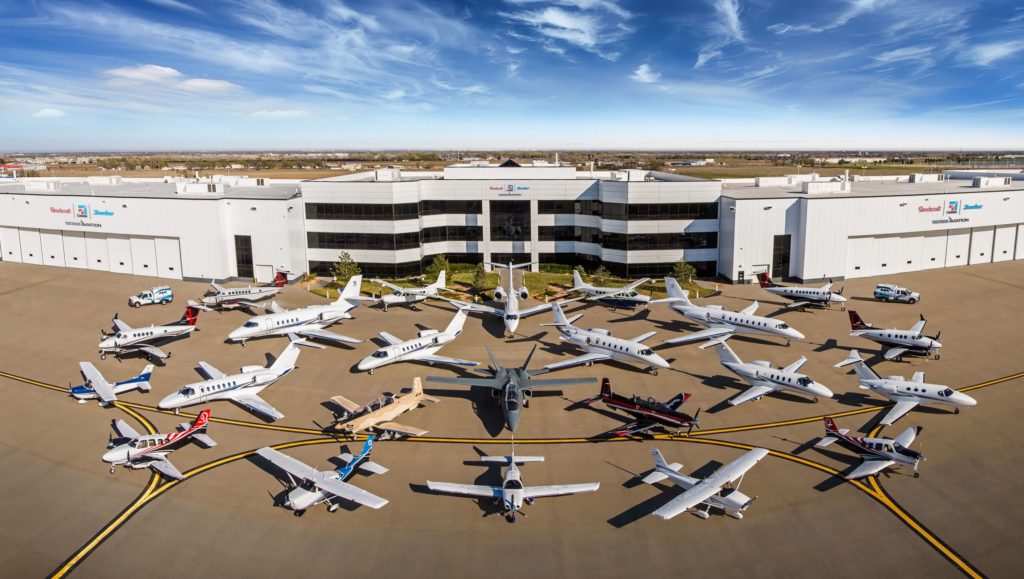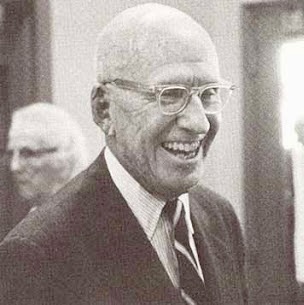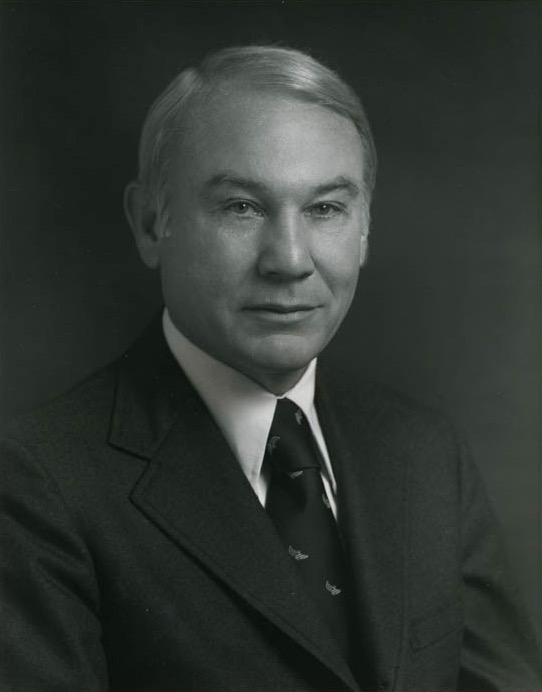Textron Incorporated has serious implications for the development and execution of today’s New Manhattan Project. The company’s founder was the nephew of Arthur D. Little. Their Bell Aerospace divisions were acquired by a future chairman of the United States Federal Reserve Bank. They have serious connections to former Nazis. Today Textron trades on the New York Stock Exchange under the ticker symbol TXT and their main business operations are in aerospace and specifically military aerospace including the production of drone aircraft. To gain the deepest of understandings here, please refer to the new, greatly revised and expanded second edition of the author’s book Chemtrails Exposed: A New Manhattan Project, available exclusively at Amazon.
From little acorns…
Textron was founded in 1943 by a man named Royal Little (1896-1989). Royal Little was the nephew of Arthur D. Little (1863-1935). Arthur D. Little was the proprietor of the eponymous research corporation, Arthur D. Little, Inc. As readers of this work already know, Arthur D. Little, Inc. sponsored lots of early New Manhattan Project research. Arthur D. Little also staunchly supported and suggested the original name of the Research Corporation for Science Advancement. Arthur D. Little’s role in the formation of the Research Corporation for Science Advancement (RCSA) is significant because it appears that the RCSA has produced much of the basic science that has gone into today’s New Manhattan Project (NMP). Royal Little had been raised almost as a son to Arthur D. Little and Royal Little served on the Arthur D. Little, Inc. board of directors.
From early on, Textron was a defense contractor. Their main business was the production of the synthetic fabric rayon, and during World War II they produced rayon parachutes for the Air Force. The name ‘Textron’ means to connote ‘textiles made from synthetics.’ Arthur D. Little was one of the chemists that invented rayon. The fact that Textron is a defense contractor from early on is of interest to our investigation because mountains of evidence indicates that the New Manhattan Project has been a Department of Defense production.
Although their earliest business operations pertained exclusively to rayon production, Textron was destined to become what we call a ‘conglomerate.’ A conglomerate was, at the time, a new type of business model that involved the ownership and operation of many, very different types of businesses. Around 1950 Textron made its first acquisition: Cleveland Pneumatic Tool Company, the nation’s leading manufacturer of aircraft landing struts. From that point forward, Textron acquired scores of companies from many different industries, some of which with relevance to the New Manhattan Project. By 1958 non-textile sales accounted for about 75% of total sales and by 1960, Textron ranked among Fortune’s one hundred largest U.S. industrial corporations.
It is interesting to note that other conglomerates of the era had pervasive connections to the New Manhattan Project. Litton Industries and Ling-Temco-Vought were extensively involved in aerospace operations with direct relevance to the NMP. Litton’s aerospace operations were eventually acquired by Northrop Grumman and Ling-Temco-Vought’s applicable operations ended up as something called L3Harris Technologies.
Textron’s Nazi aerospace
Aerospace is a field with particular relevance to the New Manhattan Project. This is why Textron’s aerospace operations are of particular interest to our investigation. Textron’s aerospace operations have also involved former Nazis such as Hans Dolezalek and Walter Dornberger which makes them even more interesting because former Nazi scientists appear to have played an important role in the production of today’s New Manhattan Project.
As we have seen, Textron was involved in defense aerospace from the beginning, but it was their 1960 acquisition of Bell Aircraft that brought Textron into the forefront of the industry. They got quite the good deal. Textron paid $32M for Bell Aircraft’s defense business which included their line of Bell Helicopters. At the time of the purchase, Bell’s defense business was not seen by many as so incredibly valuable. In 1959, before the acquisition, Bell’s defense business had earned after tax profits of only $1.9M. But Bell had been acquired for less than its net asset value and as it turned out, Bell became a major beneficiary of the Kennedy administration’s new procurement program. By 1963 it was one of Textron’s fastest growing segments as it brought in $160M in revenues and doubled pre-acquisition profits. Years after the acquisition, the defense related businesses acquired from Bell Aircraft frequently earned more annually after taxes than the entire cost of the original acquisition. As of 1979, the sales volume of the defense related Bell Aircraft operations was ten times the volume prior to Textron’s acquisition.
Instrumental in this Bell Aircraft deal was a future chairman of the private US Federal Reserve Bank by the name of George William Miller (1925-2006). Miller was credited with turning Textron into a global conglomerate. He was hired by Little in 1956 as the assistant secretary overseeing acquisitions. By 1960 Miller was the president of Textron and by 1968 he was Textron’s CEO. He aggressively acquired companies and expanded operations to Europe and Asia. In 1974 he became chairman of the Textron board and hosted a Soviet trade delegation at the company headquarters in Providence, R.I. By the mid-1970s Textron was a multibillion-dollar corporation. Miller was chairman of the Fed from 1978 to 1979. In 1981 he founded G. William Miller & Co., a Washington investment company he likened to a Swiss-style merchant bank.
Now let’s get into Textron’s Nazis. Walter Dornberger (1895-1980) was a senior Vice President of the Bell Aerosystems Division of the Textron Corporation. Prior to his position at Textron, during WWII Dornberger was the head of Nazi V-2 rocket development at the Peenemünde slave labor camp. Later in the war, Dornberger also convinced Hitler to build the Nordhausen rocket factory where at least 20,000 prisoners from the nearby Dora concentration camp were worked to death. After the war, he was initially interned in British POW camps, but in 1947, immediately after his release, he went to work on a classified rocketry program at the then Wright Field near Dayton, Ohio. Today this installation is known as Wright-Patterson Air Force Base and has a plethora of connections to today’s New Manhattan Project.
Another of Textron’s Nazis is Hans Dolezalek. Dolezalek apparently came to Textron with their 1985 acquisition of something called the Aviation Corporation. Hans Dolezalek is a distinguished German meteorologist who worked for the Wehrmacht Weather Service during WWII. He was also an early member of the Nazi SA Brownshirts. Dolezalek visited America in 1958 in order to attend a major meteorological conference and subsequently accepted a job with AVCO (Aviation Corporation) in Wilmington, Massachusetts. In 1985, AVCO was acquired by Textron for $2.9B. Dolezalek has worked extensively in the vein of the New Manhattan Project. He has done lots of work in the area of atmospheric electricity and artificial ionization. He has also done work for the Office of Naval Research – an organization with strong implications for the development of the NMP. Dolezalek continued his work in atmospheric electricity until at least 1999 when he was a member of the international commission to NASA’s 11th International Conference on Atmospheric Electricity.
References
How to Lose $100,000,000 and Other Valuable Advice a book by Royal Little, published by Little, Brown and Company, 1979
The Rise and Fall of the Conglomerate Kings a book by Robert Sobel, published by Stein and Day, 1984
Bull’s Eye: The Assassination and Life of Supergun Inventor Gerald Bull a book by James Adams, published by Times Books, 1992
“Tex Thornton and the New Manhattan Project” an article by Peter A. Kirby, published by Activist Post, July 12, 2020
“G. William Miller, Former Chairman of Federal Reserve and Treasury Secretary, Dies at 81” an article by Robert D. McFadden, published by The New York Times, March 19, 2006
“Fed Chairman G. William Miller, 81” an article by Adam Bernstein, published by The Washington Post, March 20, 2006 textron.com
Links
- PeterAKirby.com
- My Minds page
- My Parler page
- My GoodReads page
- My YouTube channel
- My BitChute channel
Websites
- ClimateViewer.com
- GeoengineeringWatch.org
- NoGeoingegneria.com
- StopSprayingCalifornia.com
- ChemSky.org
- NuclearPlanet.com
- GlobalSkyWatch.com
- ChemtrailsProject.com
- ChemtrailsProjectUK.com
- ChemtrailSafety.com
Peter A. Kirby is a San Rafael, CA researcher, author, and activist. Please buy the greatly revised and expanded second edition of his book Chemtrails Exposed: A New Manhattan Project available now exclusively at Amazon. Also please join his email list at his website PeterAKirby.com.
Subscribe to Activist Post for truth, peace, and freedom news. Send resources to the front lines of peace and freedom HERE! Follow us on SoMee, HIVE, Parler, Flote, Minds, and Twitter.
Provide, Protect and Profit from what’s coming! Get a free issue of Counter Markets today.




Be the first to comment on "Textron and the New Manhattan Project"